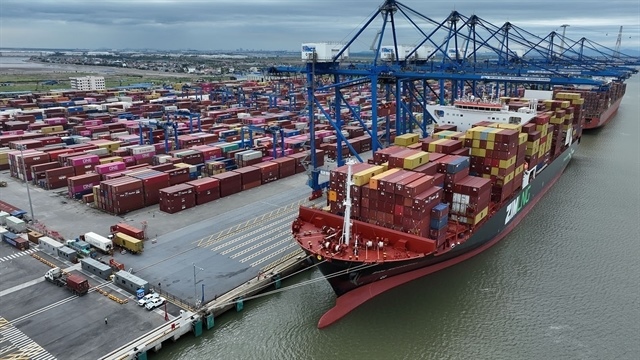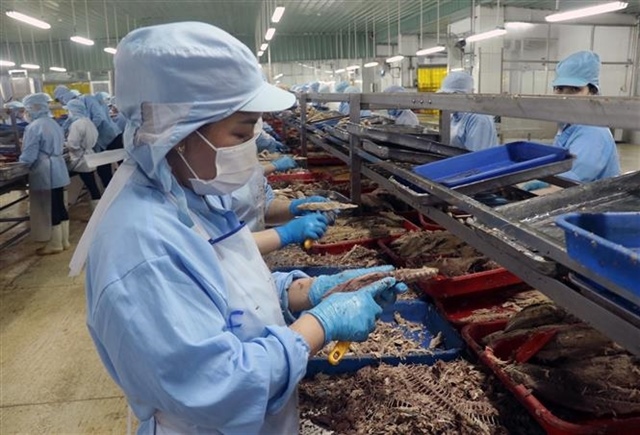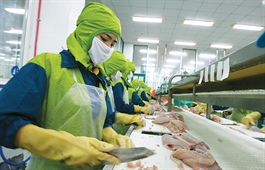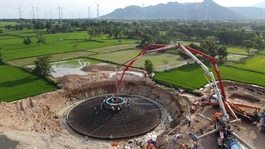Low prices, labor shortages concern textile, garment businesses
Low prices, labor shortages concern textile, garment businesses
While Vietnam earned US$11.747 billion from exporting textiles and garments in the first four months of 2021, up 13.33 percent from the same period in 2020, businesses in the industry are still worried about low product prices and labor shortages.
Growing number of orders
According to data from the Vietnam Textile and Apparel Association (VITAS), revenues from textile and garment exports reached US$11.747 billion in the first four months of 2021, including US$8.766 billion worth of garments, US$1.638 billion worth of fiber, and US$740 million worth of fabric. The US, Europe, and Japan remained the biggest importers of Vietnamese textile and garment products.
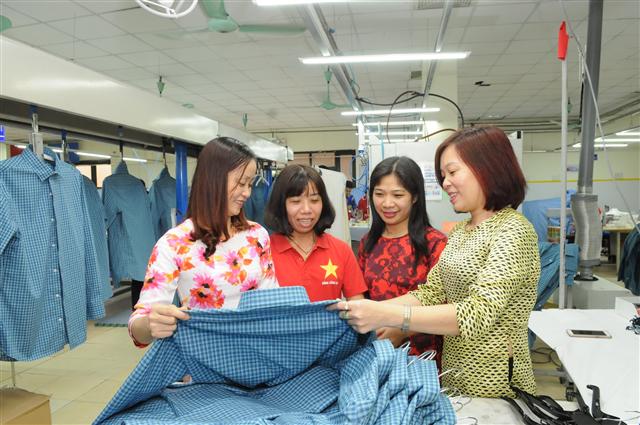
Vietnam’s textile and garment exports grew well and are expected to reach the US$39 billion target for 2021
|
Notably, a large number of businesses in the industry have received orders for production until the end of the third quarter of 2021 or even the end of the year.
According to Nguyen Van Phong, General Director of the Hue Textile Garment Joint Stock Company, in the first quarter of 2021, the company’s garment sales reached almost VND300 billion, accounting for 35 percent of the 2021 target and up 40 percent from the same period in 2020. The value included more than US$12 million worth of garment exports, 40 percent of the yearly target and 65 percent higher than the same period last year.
In the second quarter, the Ninh Binh Garment Export Joint Stock Company received a large number of orders, enough for the company’s production until September, according to the company’s director Pham Thi Lan Huong.
Economists say the value and position of Vietnamese garments and textiles in a number of major foreign markets increased or remained unchanged. Specifically, in the EU, the value of 100 kilos of cotton T-shirts made in Bangladesh decreased one percent in 2020 compared to 2019 to 1,091.5 euros, while the price of Vietnamese products of the same kind increased three percent to 2,157.9 euros; the value of 100kg of Bangladeshi cotton T-shirts for women or girls decreased seven percent to 1,329.5 euros, while that of Vietnamese products of the same kind remained unchanged at 2,157.8 euros. In the US, the price of a dozen of Bangladeshi cotton T-shirts decreased 20 percent to US$17.99 in 2020, while that of Vietnamese ones was down 17 percent to US$31.9; the price of Bangladeshi pullovers fell two percent, while that of Vietnamese ones remained unchanged at US$46.9.
Vietnamese textile and garment enterprises have been investing in automation technology to improve product quality and shorten delivery time.
Labor shortages
Although they have received a large number of orders this year, domestic textile and apparel enterprises are still worried about low product prices and labor shortages. Nguyen Van Phong, General Director of the Hue Textile Garment Joint Stock Company, said enterprises are expecting changes in price, order structure and product type, and decrease in the proportion of FOB (free on board) orders. Sales value in general and export value in particular will likely be lower than in the first quarter, Phong said.
Apart from concern about a potential reduction in productivity and revenue due to its shift to production of knitwear to compensate for the shortage of such traditional products as shirts, suits and trousers, the Garment 10 Corporation is finding it very difficult to recruit additional employees to produce its orders for the second quarter of 2021 and reach its 2021 revenue target.
Labor shortages have become a big problem of many textile and garment companies. Pham Xuan Hong, Board Chair at Saigon 3 Garment Joint Stock Company and President of the Association of Garments, Textiles, Embroidery and Knitting (AGTEK) in Ho Chi Minh City, said that in 2020, due to the lack of orders, a number of textile and garment businesses had to reduce or stop production and dismiss workers.
Despite a resurgence in orders for 2021, employers are finding it difficult to recruit workers, Hong said. Despite difficulties, Vietnam’s textile and garment exports grew well and are expected to reach the US$39 billion target for 2021, according to VITAS Chairman Vu Duc Giang.
A VITAS representative advises domestic textile and garment enterprises to keep an eye on market changes, adjust production accordingly, boost the search for new orders and seek sustainable development based on green solutions.


